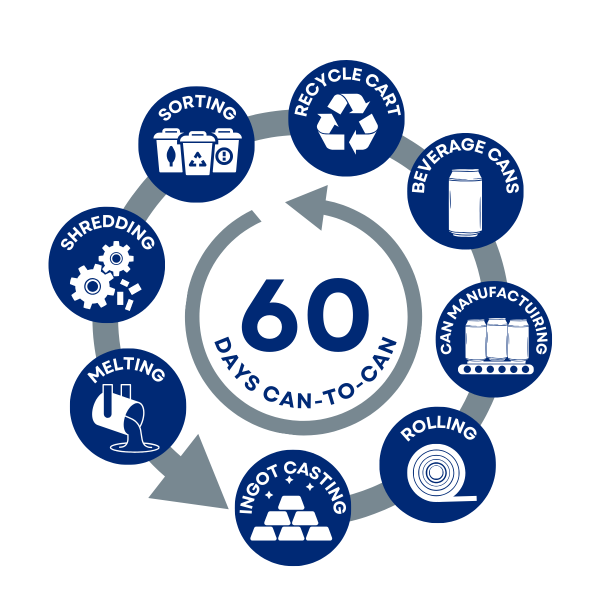Recycling is the Solution, Aluminum is the Key
According to Global Data, in 2023 the world’s prepackaged beverage consumption will reach 961 billion units. A majority of that will be plastic, an estimated 589 billion units to be exact. If we continue down this path, by 2050 plastic pollution will outweigh fish in our ocean.

A Brief History of Beverage Packaging
Since the invention of pre-packaged beverages in the 1800s, bottlers have focused on opportunities to cut costs and downtime while increasing production speeds to keep up with consumer demand. With the widespread success and increasing worldwide popularity, the industry continued to develop and advance bottling and packaging processes. In 1957, aluminum cans were invented, a highly cost-effective and light-weight option compared to glass. Aluminum, which seemed to be the answer to bottlers largest roadblocks, was also the most sustainable packaging option. However, its novelty was short lived. In the 1970’s PET bottles were introduced and became the premier choice for bottlers, as this was now the most cost-effective and lightest weight option on the market. This introduction caused some of the most detrimental environmental impacts to our planet.
The Infinite Lifecyle of the Can
Aluminum is one of the very few beverage packages that can be infinitely recycled. Furthermore, it is the best suited material to be recycled without losing quality of property. Check out some key facts provided by our friends at the Aluminum Association:
- Making recycled aluminum only takes around 5% of the energy needed to make new aluminum.
- Nearly 75% of all aluminum ever produced is still in use today.
- Recycling one ton of aluminum saves the equivalent carbon emissions of driving nearly 27,000 miles.
- Industry recycling efforts in the United States saves more than 90 million barrels of oil each year.
- On average, aluminum cans contain 73% recycled content, which is up to 20 times the recycled content of plastic bottles.
The 60 Day Can-to-Can Life Cycle
Did you know about the 60 day can-to-can life cycle? An aluminum can is able to be used by a consumer, recycled, and manufactured back into another can to be back on the shelf within 60 days. Check out the graphic below to see the processes!

Belvac’s Role in the Cycling Recycling Process of Aluminum Beverage Cans